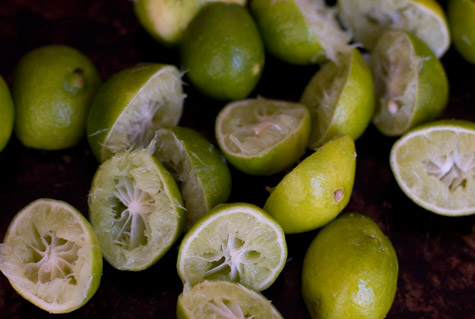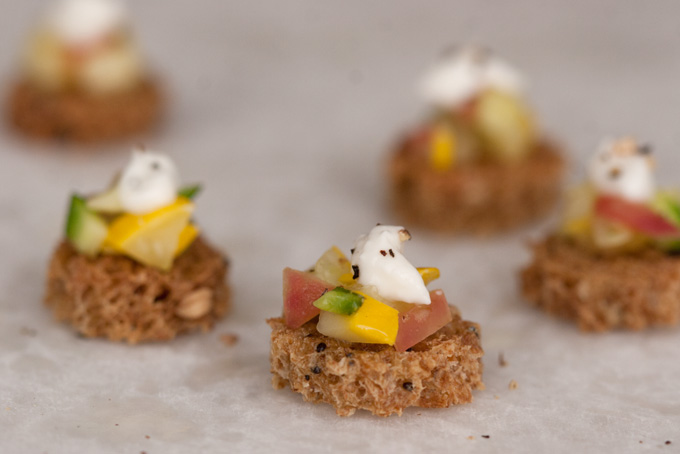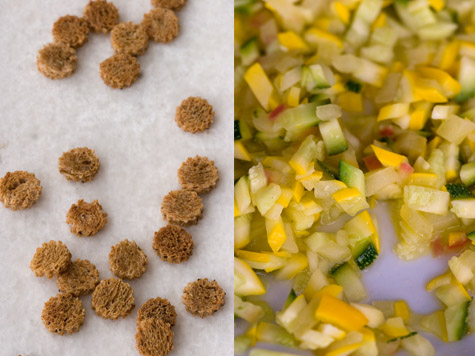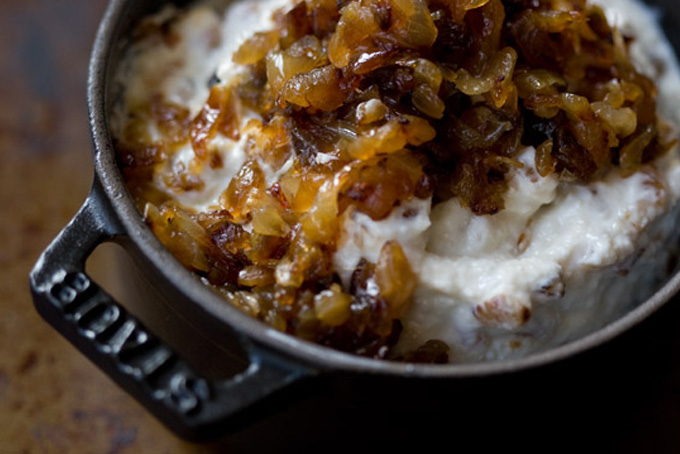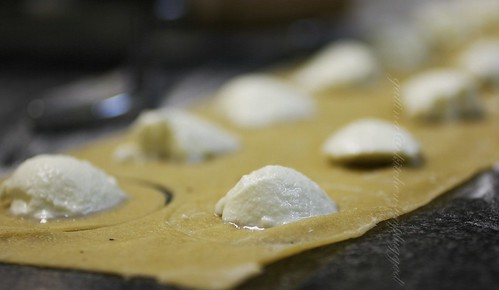Remember last week when I asked you about drinkable chocolates? Well, I ended up getting over two hundred responses. So many responses that trying to consolidate them into a semi-coherent list has been quite a challenge. Many of you expressed interest in hearing the other responses I received. Below are the names of the drinkable chocolate products that you mentioned again and again, with a sprinkling of highlighted comments.
This is by no means intended to be the definitive post on or about drinking chocolates. I haven't even had a chance to sample all of these....yet. It is a taste of the responses you sent in. Chocolate, like wine, olives, etc, is a rich area of interest - complex, and steeped in history. My recent readings on the chocolate front include: Mort Rosenblum's Chocolate: A Bittersweet Saga of Light and Dark, The Great Book of Chocolate by David Lebovitz, La Maison du Chocolate by Robert Linxe. Also, Nigel Slater on his darkest desires (thanks Ian). Just the very tip of the iceberg.
One of the questions I still have...What is the advantage of using a drinkable chocolate product over shaving your favorite premium bar into a cup with a splash of hot milk? Convenience and less mess? The packaging on many of these products are fancy and beautiful (making for nice gifts), and many of the fancy flavor infusions are tasty...what else?
Some are confused about the difference between hot cocoa and drinking chocolates. One of my Seattle-based readers kindly offered up this well articulated explanation for the difference between cocoa and drinking chocolates:"Cocoa is derived from chocolate liquor - the professional term for unsweetened baking chocolate. Cocoa powder is chocolate liquor that has been pressed to remove half to three-quarters of its fat and then pulverized. A hydraulic press, designed by the Dutchman C. J. Van Houten in the 19th century, removes fat while leaving solids behind. Cocoa has a strong chocolate flavor and is easy to incorporate into other ingredients." Cocoa will give you difference texture, taste, and mouth feel.
Here is the list, in alphabetical order....I have a feeling the comments area on this post is going to be an absolute free for all. Enjoy, and drink in moderation ;) -h
Angelina's
Mixed reviews on the legendary Angelina's hot chocolate in/from Paris. One of my globe-trotting friends suggested that Angelina's is no longer the "it" chocolate chaud destination that it once was - and hinted that a sprinkling of others had taken its place.
J.S. exclaimed it was the best hot chocolate in the world, and F.V. emailed this Angelina experience,"...someone told me about a cafe on the Rue de Rivoli, right across from the Tuileries/Louvre called Angelina. The few people I talked with about it (locals and visitors alike) emphatically claimed they served the "best" drinking chocolate. Of course, I had to check it out for myself. It was sort of a touristy place. I wasn't able to stay to try the chocolate there, but I did buy some of their instant mix that was reported to be just as good as having it in the cafe. The mix itself was surprisingly pretty good, slightly sweeter than I like it, but notably rich and creamy for coming from a mix that you add to water (...skeptical at first, because chocolate mix plus water equals Swiss Miss without the crispy marshmallows, to me). The interesting thing about their product is that it has the milk mixed in already....seems like the finer drinking chocolates rely on fresh milk to be added to the mix. Anyway, Angelina calls their mix "granulated," if I remember correctly, as opposed to "powdered" because it actually comes in a fine pellet form, almost like chocolate sprinkles. The instructions to make it direct you to whisk the granules into hot water over a flame, then to bring it back to a boil. The bringing-it-back-to-a-boil part makes a huge difference - it makes the drink very, very creamy and frothy. I was lazy once and thought I could make the mix in the microwave, without the additional boiling, and it came out as flat as the conventional mass produced hot chocolate powders like Swiss Miss." F.V.
One more, "I know Angelina in Paris is known for their African hot chocolate and apparently, there's a cafe in downtown Napa that makes it. I couldn't bring myself to pay the $7 for it last week, otherwise, I would have tried it." L.T. Northern California
Chuao Chocolatier
"It is a powder, but with large chunks of chocolate that get so smooth and gooey. They have a version called Spicy Maya that has a great bite, but I more often turn to their plain Abula version. Because there's a little powdered milk in the mix, this is best made with water - and I use quite a generous amount of the mix (about 1/3 of whatever cup I'm drinking from)." R.N.G.
Dagoba
All organic, all natural. Dagoba seems to be a darling....lots of people wrote in citing sustainable practices and delicious products as reasons they buy. "We love his tasty chocolate drinks -all made from organic chocolate. You definitely need to try this one." B.D.
"Dagoba's Organic chocolate mixes are my favorite, very dark and rich." F.V.
Green & Black's
A little different in their approach, G&B mix chocolate with cane sugar and cocoa derived from the same beans for their mix. You said, "At first I bought the products because they were fair-trade and organic, now I buy it purely for the taste!" C.L.
Jaques Torres
Dessert Circus! Whenever that show came on PBS I was always watched - chocolate balloons, lollipops, and clown noses -oh my! Jaques offers up 2 flavors drinkable chocolate - straight, and a spiced up version that features allspice, cinnamon, ground sweet ancho chili peppers, and smoked ground chipolte chili peppers.
L.A. Burdick
Their site says pure shaved chocolate, but I'm not sure what kind of chocolate exactly. Quite a few of you listed L.A. Burdick as a favorite, citing, "rich, intense, drinking chocolate."
MarieBelle
The ladies like MarieBelle. Chalk it up to impeccably cute packaging and a tasty product. I've had the MarieBelle Aztec Hot Chocolate - their most popular flavor. It is medium dark, on the sweet side, and made with high quality Venezuelan cacao beans coming in with a cacao content of 63%. P.C. adds, "If you prepare the Aztec Hot Chocolate and chill it, it becomes pudding!"
Max Brenner
My pals down under rave about Max, the bald Israeli. He has popular chocolate cafes in Australia (and other locations?), and his hot chocolate is available for purchase online with other inventive hot chocolate products like cute little tea light heated cups with metal straws keep you chocolate melty and warm. Available for purchase here.
Mayordomo
I had a cup of Mayordomo Mexican Hot Chocolate from Oaxaca a couple weeks back and it was delicious, the problem is I forgot to ask what variety of Mayordomo was used - tablets, choco classic, canela, etc. So I am going to have to try them all. In general it seemed smoother (less gritty) and milder than the Ibarra I've tasted in the past. There is a great Mexican Chocolate Pudding recipe in Nick Malgieri's Chocolate book to try if you are a Mexican chocolate fan.
National de Chocolates (link broken)
With a higher cocoa to sugar ratio than some of the Mexican brands, many of you wrote to me about this Colombian chocolate. I haven't tried it yet, but it also seems to have some fans on this eGullet hot chocolate thread as well.
Poulain
A lone voice singing the praises of Poulain sent me the above link.
Recchiuti
Sounds like Michael may offer a drinkable chocolate product of some sort available later this year.
Scharffen Berger
No big surprise, many of you liked one of my personal hometown favorites, Scharffen Berger. Not too sweet, thick, and rich. Highly recommend trying this one.
Schokinag
Many people wrote to me recommending Schokinag. I enjoyed their 'Extreme Dark' (79%) quite a bit when I tried it at the Fancy Food Show earlier this year. I found a few of the other novelty flavors way too sweet for my tastes - especially the Dulce De Leche (not really drinkable chocolate, but part of their drinkable chocolate line nonetheless)....Give the Extreme Dark a taste. Rich, dark, smooth, all natural, GMO Free.
Valor
"I was able to keep my children moving from one historical site to another on a trip to Spain last summer by bribing them with hot chocolate stops along the way. This chocolate is unbelievably rich, velvety, and so thick, you can almost stand a spoon up in it. It has the added advantage of being relatively easy to find and very easy to make (it has both Spanish and English instructions on the label)--just heat your milk and whisk in until melted. It thickens as you let it sit off-heat for a few minutes." B.A.
"My husband and I just returned from Madrid where, as you may know, a common breakfast food is churros with chocolate. You dip the delectable churros into the thickest, most amazing hot chocolate I've ever tasted. A little bit of heaven every morning! (I'm attaching a picture, in case you're interested.) Anyway, right behind our hotel was a Valor chocolate shop, and that is where we ate every morning." J.W.
"Valor Chocolate a la Taza (in tablet form): Heated with milk (a splash of cream doesn't hurt either!) until the starch thickens it to almost spoonable consistency.
Vosges Haut Chocolat
For you infused chocolate fans. I'm not sure if this is chocolate or cocoa - they call it cocoa. T.S. says,"Outrageously expensive, but I am addicted to the Red Fire bar. This is the exquisite Red Fire in drinkable form.You can order it over the internet, so it's shippable if you don't
mind spending your kid's college tuition fund in the process."
Zingerman's
Dark Spanish drinking chocolate. I haven't tried this one yet, but lots of you mailed me raving about it.
Techniques and other information you sent:
"I had dinner with friends recently, and they pulled out their "cocomotion" hot chocolate machine. If you haven't seen it, it's like a slow-speed blender that gradually emulsifies the milk and the chocolate, heating it up to the right temperature. It takes longer than heating the milk on the stove, but I will say that it made perfectly blended, smooth-as-silk hot chocolate. I am a true believer now." A.M. - Washington D.C.
"I wanted to point you to a book you might enjoy, a chunk of which deals with chocolate in its original form. The book is called 'America's First Cuisines,' by Sophie Coe. Coe discusses the major foods and preparation techniques of the Aztecs, Maya, and Inca indigenous people. And, as I said before, she's got a great section on chocolate, full of wonderful quotes from primary sources... it's really good. And it's also very well written. I highly recommend it." D.N. - Berkeley.
"Best drinkable chocolate? Couverture. No doubt about it. Skip the 'hot chocolate mixes'. Melt couverture at no more than 80 degrees C. Stir it into a paste and keep adding water and milk (you'd be surprised, but more water than milk..just my opinion, tho). Let it rest. It becomes thicker and 'smooth' that way. I don't know if you prefer 'pure' chocolate flavor only, but sometimes chocolate tastes better with other flavors. Cayenne pepper powder can be surprisingly delish. Mint,orange etc are traditional. But there are other unusual combinations too. Lavender, wasbai, curry powder, pepper, sweet paprika, cinnamon, cardamom, cloves..you name it, it can be done." F.B.


